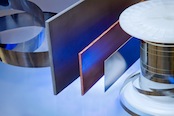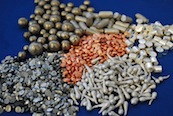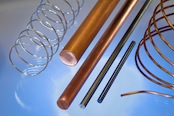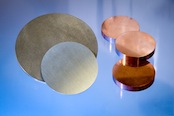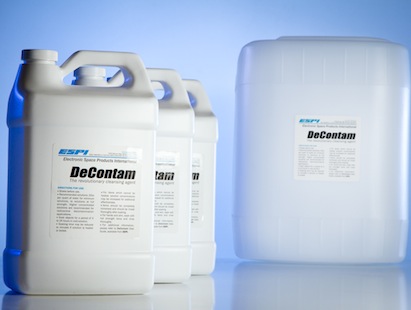Praseodymium Oxide Pr6O11
MATERIAL SAFETY DATA SHEET
I. PRODUCT IDENTIFICATION
Manufacturer/Supplier:
ESPI Metals
1050 Benson Way, Ashland, OR 97520
Toll Free (800) 638-2581 * Fax (541) 488-8313
E-Mail: This email address is being protected from spambots. You need JavaScript enabled to view it.
Product Name: Praseodymium Oxide
Formula: Pr6O11
CAS Number: 12037-29-5
II. HAZARDOUS INGREDIENTS
Hazardous Component: Praseodymium Oxide
Percent (%): 0-100
OSHA/PEL: N/E
ACGIH/TLV: N/E
HMIS Ratings:
Health: 1
Flammability: 0
Reactivity: 0
III. PHYSICAL DATA
Boiling Point: 4200 oC
Melting Point: 2500 oC
Specific Gravity: 6.34 g/cc
Solubility in H2O: Insoluble
Appearance and Odor: Dark brown to black powder or pieces, no odor.
IV. FIRE AND EXPLOSION HAZARDS DATA
Flash Point: NA
Autoignition Temperature: N/E
Flammable Limits: Lower: NA Upper: N/A
Extinguishing Media: Use suitable extinguishing media for surrounding material and type of fire.
Special Firefighting Procedures: Firefighters must wear full face, self-contained breathing apparatus and full protective clothing to prevent contact with skin and eyes.
Unusual Fire and Explosion Hazard: None
V. HEALTH HAZARD INFORMATION
Effects of Exposure:
To the best of our knowledge the chemical, physical and toxicological properties of praseodymium oxide have not been thoroughly investigated and recorded.
Praseodymium is considered a rare earth metal. These metals are moderately to highly toxic. The symptoms of toxicity of the rare earth elements include writhing, ataxia, labored respiration, walking on the toes with arched back, and sedation. The rare earth elements exhibit low toxicity by ingestion exposure. May lead to production of skin and lung granulomas.
Acute Effects:
Inhalation: May cause irritation to the upper respiratory system.
Ingestion: Considered to have low toxicity by ingestion.
Skin: May cause irritation.
Eye: May cause moderate irritation.
Chronic Effects:
Inhalation: May cause writhing, ataxia, labored respiration, sedation, pulmonary edema and lung granuloma.
Ingestion: May act as a blood anticoagulant.
Skin: No chronic health effects recorded.
Eye: No chronic health effects recorded.
Medical Conditions Possibly Aggravated by Overexposure: Pre-existing respiratory disorders
Carcinogenicity: NTP: No IARC: No OSHA: No
EMERGENCY AND FIRST AID PROCEDURES:
INHALATION: Remove to fresh air, keep warm and quiet, give oxygen if breathing is difficult and seek medical attention.
INGESTION: Give 1-2 glasses of milk or water and induce vomiting, seek medical attention. Never induce vomiting or give anything by mouth to an unconscious person.
SKIN: Remove contaminated clothing, brush material off skin, wash affected area with mild soap and water. Seek medical attention if irritation develops or persists.
EYE: Flush eyes with lukewarm water, including under upper and lower eyelids, for at least 15 minutes. Seek medical attention if irritation develops or persists.
VI. REACTIVITY DATA
Stability: Stable
Conditions to Avoid: Water/moisture
Incompatibility (Material to Avoid): Acids, oxidizing agents
Hazardous Decomposition Products: None
Hazardous Polymerization: Will not occur
VII. SPILL OR LEAK PROCEDURES
Steps to be Taken in Case Material is Released or Spilled: Wear appropriate respiratory and protective equipment specified in section VIII. Isolate spill area and provide ventilation. Vacuum up spill using a high efficiency particulate absolute (HEPA) air filter and place in a closed container for proper disposal. Avoid creating dusting conditions.
Waste Disposal Method: Dispose of in accordance with local, state and federal waste disposal regulations.
VIII. SPECIAL PROTECTION INFORMATION
Respiratory Protection: Use a NIOSH/MSHA approved dust respirator.
Ventilation: Use local exhaust to maintain concentration of exposure at low levels. General exhaust is recommended.
Protective Gloves: Rubber gloves
Eye Protection: Safety glasses
Other Protective Clothing or Equipment: Protective gear suitable to prevent contamination.
IX. SPECIAL PRECAUTIONS
Precautions to Be Taken in Handling and Storage: Store in tightly sealed container in a cool, dry area. This material is hygroscopic and will absorb moisture and CO2. Keep container tightly sealed and protect from moisture and air. Wash thoroughly after handling
Other Precautions: Dry powders can build static electricity charges when subjected to the friction of conveying, mixing or sliding. To prevent ignition, provide adequate precautions, such as electrical grounding, or inert atmospheres when material is used in the presence of flammable materials.
Work Practices: Implement engineering and work practice controls to reduce and maintain concentration of exposure at low levels. Use good housekeeping and sanitation practices. Do not use tobacco or food in work area. Wash thoroughly before eating and smoking. Do not blow dust off clothing or skin with compressed air. Maintain eyewash capable of sustained flushing, safety drench shower and facilities for washing.
TSCA Listed: Yes
DOT Regulations:
Hazard Class: None
The above information is believed to be correct, but does not purport to be all inclusive and shall be used only as a guide. ESPI shall not be held liable for any damages resulting from handling or from contact with the above product.
Issued by: S. Dierks
Date: September 2010

 ALLOYS
ALLOYS 
